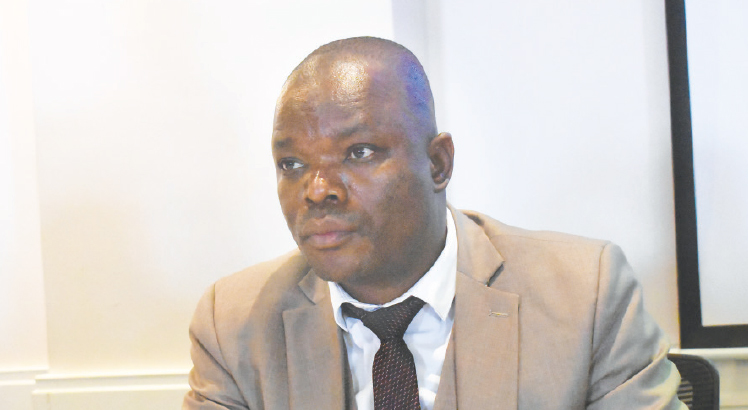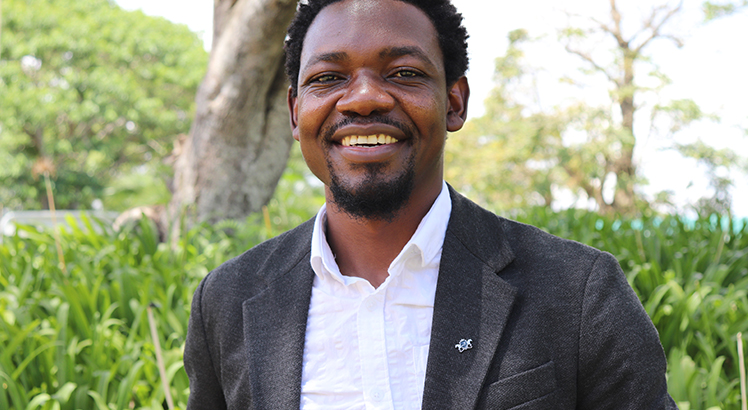Covid-19 pandemic contracts Sadc economy
During the Covid-19 pandemic period the Southern Africa Development Community (Sadc) region economy contracted the largest by 4.8 percent in 2020, from the previous year. This was larger than Central, North and West Africa regions. This picture paints Sadc as the poorest economic performance of all five continental regions. Important to ask, Why? The newly-appointed director for the United Nations Economic Commission for Africa-Southern Africa Region Office (UN-ECA-Saro), EUNICE KAMWENDO, dares to explain this and other related issues to our reporter JACOB NANKHONYA. Excerpts;

How do you explain the economic performance in the region during the pandemic?
The short answer points to the economic structure of the Sadc region. The long answer traces the economic fibre of the same and exposes issues that we have known for a long time but are now urgent with Covid-19.
Industrialisation at an aggregated level in the region is mainly based on extractive industries which are often resource intensive, with little or no value addition and weak backward and forward linkages—an economic structure that has remained largely unchanged for decades. As such, the benefits have remained highly skewed towards big businesses and multinationals that continue to dominate our economies with little or no cover in times of shocks.
But why have small enterprises, which constitute 80 percent of businesses in southern Africa, not outperformed the big business outfits?
. Unfortunately, even though micro, small and medium scale enterprises [MSMEs] constitute more than 80 percent of businesses in southern Africa, they are relegated to peripheral economic activities with high levels of vulnerability and low productivity. Largely informal and dominated by women and youth, MSMEs do not have much chance at survival and ultimately fall off the entrepreneurship drive. This is the ‘missing middle’ that we need to pay particular attention to in order to transform our economies and begin to make a dent on the high levels of poverty and inequalities prevalent in the region.
Notwithstanding, the relatively strong industrialisation base of the region provides a solid foundation to launch forward better in order to become more resilient and competitive in post Covid-19 times. In order to realise this, the region must rethink its industrialisation strategies and pathways to ensure that optimal benefits accrue to its businesses and people for shared wealth and prosperity.
Where will the desired transformation come from?
Agriculture being Africa’s largest economic sector—employing 70 percent of the continent’s workforce and contributing 20 percent of the continent’s total gross domestic product (GDP)—provides a low hanging fruit for the sub-region. More than 20 percent of GDP for sub-Saharan Africa comes from agriculture, with an estimated $100 billion, annually—providing more jobs than any sector continent-wide.
Despite this massive social and economic footprint, Africa’s full agricultural potential remains untapped. The continent remains a net importer of basic food products which cost Africa at least $35 billion (on our import bill) in 2015 alone and rising to $110 billion/year in a no change scenario (Agra 2015). We have the policy frameworks; we have the political will; we have human resources; and we potentially have the financial resources and technical know-how.
So, what is standing in our way towards transformation?
First, is the potential for inclusive growth that the agriculture sector provides through the creation of employment, promotion of food security, development of agriculture value chains that would power industrialisation and diversification. Second, are the opportunities that the African Continental Free Trade Agreement (AfCFTA) and other free trade area agreements present for the sub-region. I have no doubt that this agreement is poised to accelerate and enhance transformation in southern Africa by effectively engaging the private sector as a driver for sustainable agricultural growth.
How can we realise these promises?
First, by embracing smart, climate-resilient agriculture. We need to think big in terms of transforming the agriculture sector in the region and, indeed, the whole of Africa. We should wean ourselves from events that are beyond our control such as depending on good old rains for our livelihoods in the face of extreme climatic shocks due to climate change effects which are now increasing in frequency and severity. Which means adopting new technologies and going big on irrigation in order to use the 600 million hectares of uncultivated and unirrigated land—take note that only 3.7 percent of this land is under irrigation.
Second, it is imperative to promote and expand national, regional and continental value chains and linkages through the AfCFTA. Agricultural value chains benefit all actors involved—from the farm to the table. This is consistent with the UN mandate of ‘leaving no one behind’. This is a game-changer and a win for everyone. Thus, creating the hallmarks for inclusive growth and industrialisation.
How are countries doing in terms of ratifying AfCTA?
For the 11 countries that we cover as UN-ECA, all, but two countries have ratified it. Botswana and Mozambique are probably still looking at its benefits and some of the challenges that it may bring to them. However, this is not to say they are not interested.
Often times implementation of important protocols has been a challenge, is AfCTA going to be any different?
. Within the sub-regional office we are very focused and heavily invested in ensuring that member-States move beyond the ratification. For example, we have worked with Malawi, Zimbabwe and Zambia in ensuring that they have implementation strategies after the ratification. That is one process that we will continue to engage and invest in. The other challenge is that member countries have raised issues with the rules of origin, tariff and non-tariff.
This is why we use the opportunity of meetings such as the one we had, where we would have all member States. We use such meetings to discuss some of those issues after which we are going to move on the ground as the UN-ECA to ensure that countries are moving faster since most of these issues are very technical and countries sometimes may not fully understand them. Therefore, our support is intended to remove some of those constraints countries may be facing in that sense.
Is that all you are doing in this respect?
Not at all, just also to give an example beyond what we are doing in terms of developing national implementation strategies, we are offering member States capacity-building—particular training, focusing on the whole government approach. It involves legal issues and other expert areas and also the private sector itself. Thus, the private sector is involved so that it is aware what they can actually do within the AfCTA. We see the AfCFTA as an all-encompassing and complementary framework to other frameworks such as the Comprehensive African Agriculture Development Programme (Caadp) and Free Trade Area (FTA) agreements under Sadc and Common Market for Eastern and Southern Africa—opening up opportunities for private sector engagement as a driver for sustainable transformation and growth.





